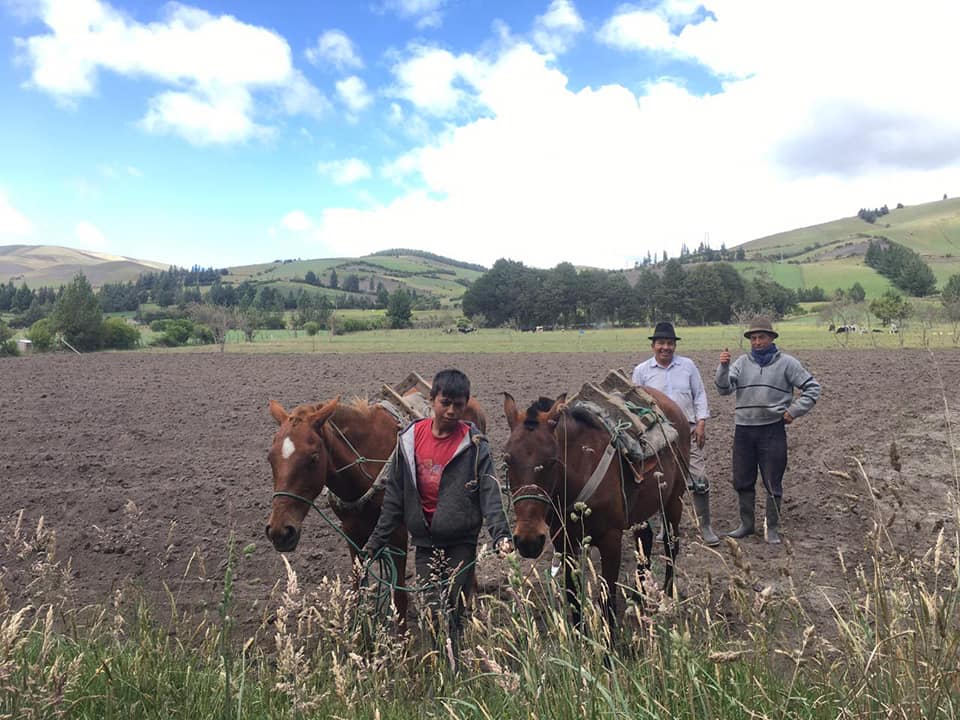Covid-19 has made two fundamental issues visible: first, that life can only be reproduced in common, through work and self-regulated forms of use and communal property; and second, that political horizons that are not exclusively market centred are more urgent than ever before. Both of these issues have long been considered, discussed, updated, and brought to life by women and men from Indigenous communities.
It is important to note that Indigenous communality is not manifest only in the discussion of ideas, but rather, and above all, it comes alive through the concrete work of women and men with tangible motivations, whose vitality comes from daily lived experiences. We can consider the existence of these communities as an immense political archipelago, which lives and which confronts the totalitization of capital and the nation state throughout the entire continent. As an archipelago, these communities extend, on a small scale and with interruptions, throughout the Americas.
When Indigenous communities began to learn about coronavirus, people would say “the pandemic was already on the way.” I use this formulation, “ya venía esta pandemia” to reveal how communal speech named this pandemic as something that was arriving from far away. I spoke with Indigenous leaders throughout the continent and this general perception was shared. Some of those I spoke with recalled the smallpox epidemics that came aboard Spanish boats in the 16th Century.
As we learned that “the pandemic was already on the way,” hundreds of communities were in open struggle against the advance of capitalist occupation via factory farming or extractive projects in Indigenous territories; other communities were participating in processes to recover their land, taken through dictatorship and war; others were organized into brigades to put out fires in their forests; hundreds of women were organized to clean up and restore their water sources; and in other communities, local organizations, authorities, and guilds were organizing celebrations that represent massive events that bring together communal and popular economies. As well, thousands of communities were planting crops–in Mesoamerica and the Andes, March is the month of sowing the fields.

In their plurality, Indigenous struggles turn the capitalist world upside down. Of course, these struggles are persecuted, criminalized, as states and other powerful interests try to silence them. This happened to Berta Cáceres, Alberta “Bety” Cariño, Tomás Cruz, and hundreds of men and women have been persecuted because of their care for communal goods.
Before the pandemic, there was a strained, antagonistic, vital tension between Indigenous communities and capital. There is also a political project that, for years, has guaranteed food security and the sustainability of life in our communities themselves as well as in the cities.
As nation states began to implement policies to control the epidemic and decreed regulations for prevention (like the State of emergency, curfews, and other legal mechanisms), communities began to organize via Indigenous authorities to care for the lives of their residents. But the legal measures also impacted our mobility and the potential of various processes of Indigenous communities, creating an adverse panorama, especially with regards to our most fundamental political mechanism: gathering in deliberative assemblies.
From the massive deportation of our community members who were working in the US; to the closure of popular markets, upon which the economies of many communities depend; to the government bailout of large businesses, we see a disregard for the lives of those who live from their own work.
Given their high level of social fluidity, Indigenous communities have been able to respond effectively in the face of this emergency. It was the communities, via the Indigenous authorities, who created communication campaigns to prevent the spread of Covid-19. Each campaign was carried out in the language spoken inside the respective community. In addition, communal markets were created, with two meters of distance between each stand selling grains, fruit, and vegetables. The reactivation of communal markets ensured that the food supply chain would not be interrupted, while, at the same time, allowing for price control, as has occurred in the communities of Totonicapán, Guatemala. In Cotopaxi, Ecuador, various communities under lockdown began to prepare the land to guarantee their food sovereignty and begin the cycle of harvest. In Chila de las Flores, Oaxaca, Mexico, families are planting tamarind, purslane, and corn cobs.
In an overarching, global manner, the coronavirus pandemic has produced death, anxiety and anguish. But while communal life can appear fragile, the actions that sustain it reveal that there is energy to recover. Indigenous communities have a desire for life, as demonstrated by the care work, the prevention mechanisms, the sowing of seeds, and the communal markets, all of which are part of what makes up the power of commmunities who are fighting for life. Their desire for life exists as an archipelago.
An initial Spanish version of this article was published on Teoretica.org. Translated with permission from the author.
Author Bio:
Gladys Tzul Tzul is a Maya K’iche’ sociologist. She researches communal politics in the Andes and Mesoamerica.
